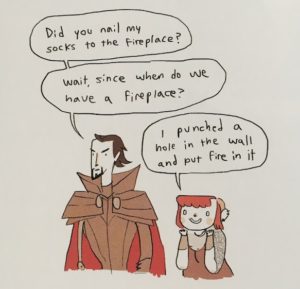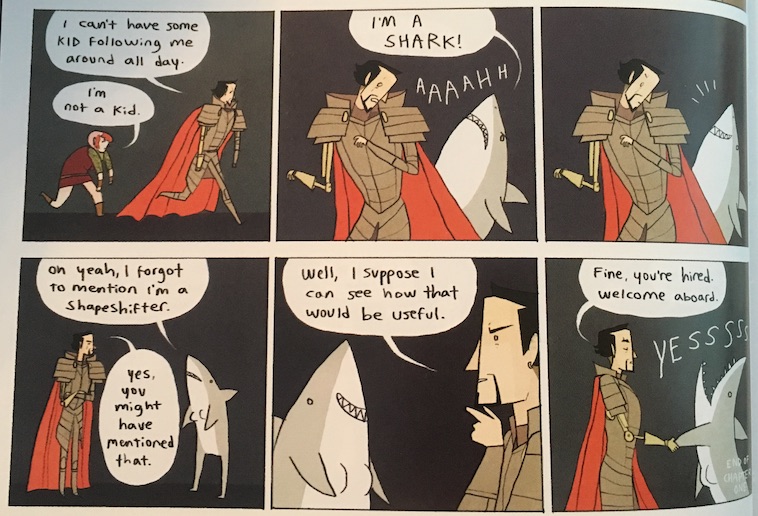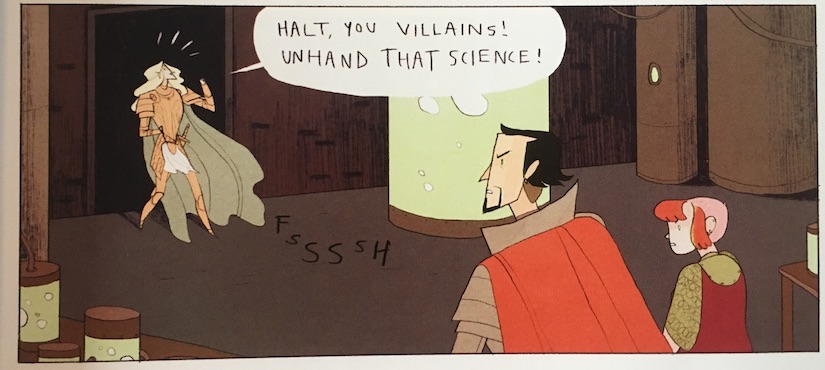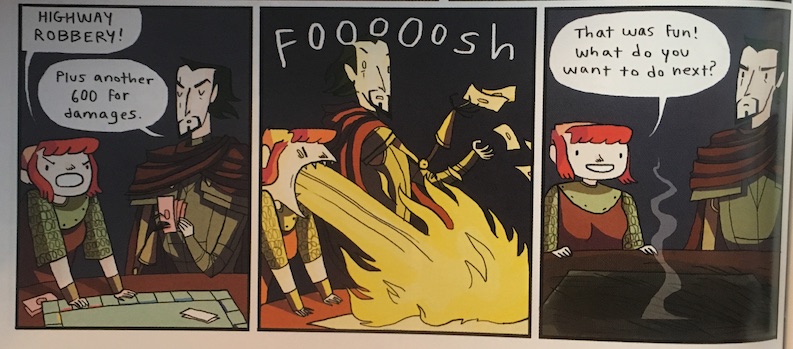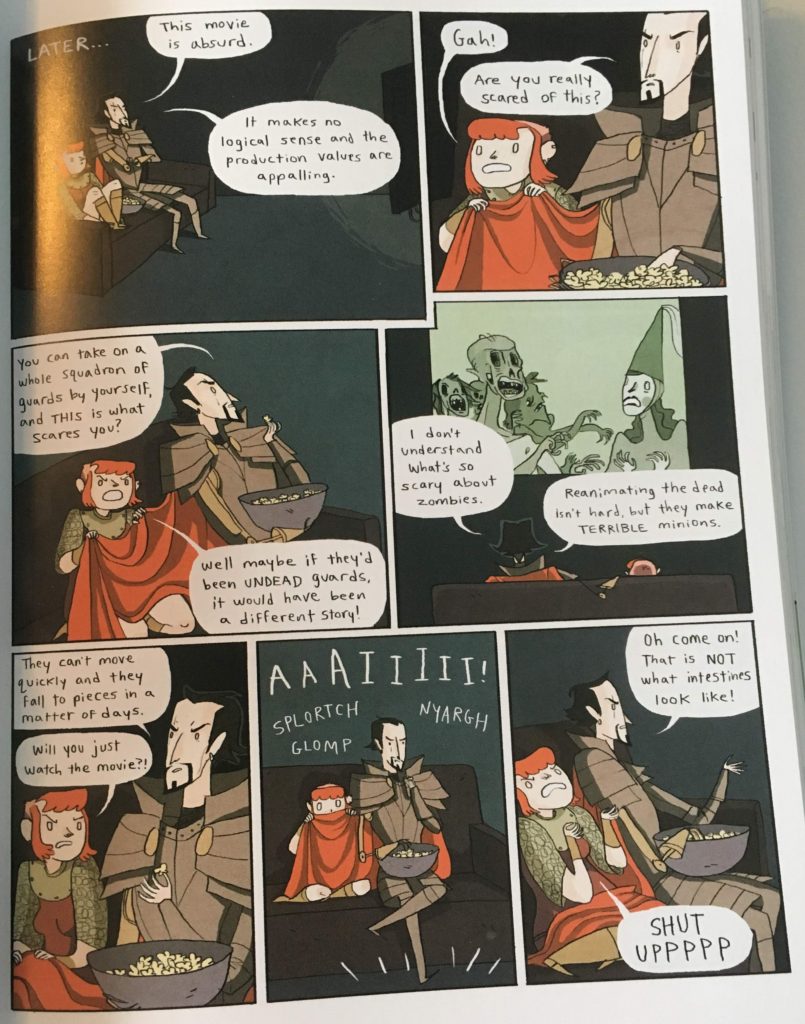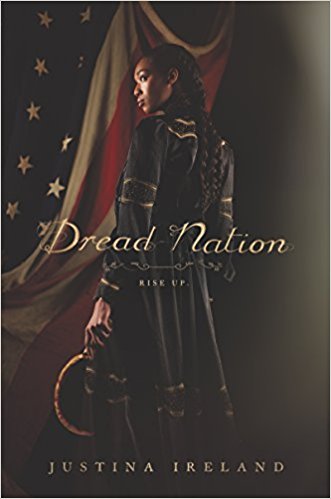 This is really a remarkable and very powerful book. First off, it’s a very engaging and exciting story with some action. You’ve got the Civil War setting and you’ve got zombies. I’m pretty sure that Civil War era isn’t a common setting in YA historical fiction, so that’s a nice thing right there. But Ireland has really twisted that setting with her introduction of zombies, or shamblers as they call them in the book (which is, by the way, an awesome term).
This is really a remarkable and very powerful book. First off, it’s a very engaging and exciting story with some action. You’ve got the Civil War setting and you’ve got zombies. I’m pretty sure that Civil War era isn’t a common setting in YA historical fiction, so that’s a nice thing right there. But Ireland has really twisted that setting with her introduction of zombies, or shamblers as they call them in the book (which is, by the way, an awesome term).
After the Battle of Gettysburg, the dead rose up off the battlefield and that started the epidemic. The Civil War ended because the North and the South basically needed to band together to fight the shamblers. Slavery is illegal, but it’s not exactly a time of respect for black people. And Ireland did something else really interesting—she took the concept of the schools that they used to forcibly send Native American kids to back in the second half of the nineteenth century and into the twentieth. These were horrible places where the primary goal was to eradicate Native American culture. Ireland took that concept and created combat schools for Native Americans and black people to learn how to effectively fight the shamblers. Because apparently it’s their duty to do that while the white people get to mostly laze around.
This is all a great and very creative setup, but what really makes the book is the main character. Jane McKeene has everything you could want in a protagonist. She’s smart and has serious moxie—you’d have to be a pretty weird person not to like her. Some of this is her training, but most of it is just who she is. She is a black, which seriously limits the roles she can play in life. But she doesn’t let that stop her. She was born to a white woman in Kentucky who was married to a rich man off in the war. I didn’t expect to get the full story on that but we do near the end, and it surprised me.
Okay, so that’s the basic setup. But there’s more to it because Jane gets herself mixed up into some intrigue. The school she attends—Miss Preston’s School of Combat—is just outside Baltimore, which claims to be shambler-free. But all is not as it seems. After a bold rescue of an entire room of people, Jane ends up getting the attention of the mayor of the city. Soon she is paired up with a boy named Jackson and a girl from her school, Katherine, on an adventure none of them wants. Fortunately, Jane’s there to save the day in her own way.
Let me just say that Jane’s voice is amazing. She’s so distinctive but is absolutely believable as a girl in her circumstances. When asked “Wherever did they find you?” she answers, “At the junction of hard luck and bad times,” because that’s what her momma used to say. She’s pretty unflappable, but even she has moments where the horrors of the attitudes of the times make her a little emotionally vulnerable: when Jane and other black kids are jogging into a new situation, she thinks:
Old Professor Ghering called Negroes livestock the night of the fateful lecture. I can’t help but think of him as we scurry along.
I loved that moment (for a character in a book) because it shows just how awful that racist climate is—even someone who knows better falls prey to shame. It’s insidious. She’s a very complex character.
Some of the other characters are also fairly well-developed. Katherine in particular is interesting because she’s walking a fine line that really challenges her. She’s very different from Jane at the beginning of the book, but less so at the end. Her circumstances make her different partially because she can pass for white. A couple of the other characters that mattered were Jackson and Gideon, and I have to say that they could both have been developed a bit more. I wanted more of both of them.
I should mention that Jane is technically bisexual because this has been another touted feature of the book. I say technically because it wasn’t integral to the story at all—it felt tacked on. Like, ooh, let’s make her bi, too! Now, I’m not saying there’s anything wrong with doing that, but it’s just not interesting or admirable.
Race, on the other hand, is absolutely intrinsic to the story. No way could this book have been written if race wasn’t addressed head-on. Ireland is unapologetic about it, too. The racism is painful and very real. A preacher in the book says:
“I know that you can deal with the obstinate Negroes as long as you remember that they are, at their heart, children. ‘Spare the rod and spoil the child,’ as the Scripture tells us.”
On the risk for black people attempting to pass as white, Jane thinks, “There’s nothing white folks hate more than realizing they accidentally treated a Negro like a person.” The woman who raised Jane (a former slave at her house) once told her about the “bad old days”:
It was bad then, Janie. A different kind of bad, but bad all the same. … So don’t let nobody tell you any different about the old days. Life is hard now, nothing but suffering, but some kinds of suffering is easier to bear than others.
This will be a hard book for some to read, but I still think it’s worth it. It tells us some truths about the times even while doing so through the screen of zombies.
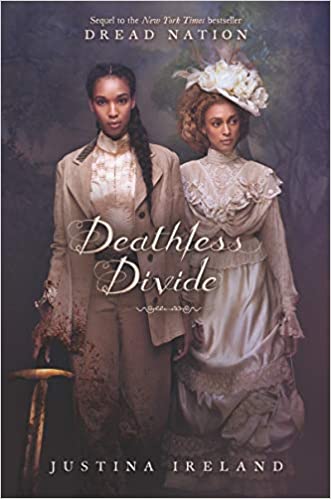 Context
Context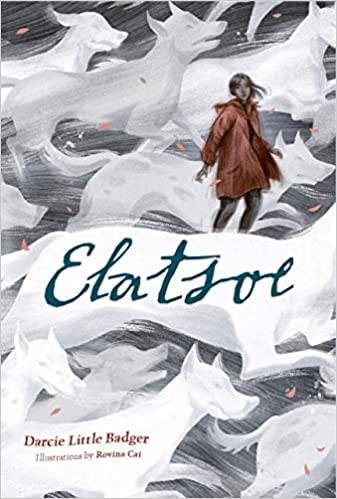 I lucked into finding this book to fulfill the “genre novel by an Indigenous, First Nations, or Native American author” category for the Read Harder challenge (which I am so not going to finish—my reading has slowed so much this year). It definitely fits that bill, as an urban fantasy grounded in Apache and other native cultures. The characters exist in an unusual world where certain aspects of the supernatural are recognized and handled in different ways, but otherwise it is just like modern America, microaggressions and all.
I lucked into finding this book to fulfill the “genre novel by an Indigenous, First Nations, or Native American author” category for the Read Harder challenge (which I am so not going to finish—my reading has slowed so much this year). It definitely fits that bill, as an urban fantasy grounded in Apache and other native cultures. The characters exist in an unusual world where certain aspects of the supernatural are recognized and handled in different ways, but otherwise it is just like modern America, microaggressions and all.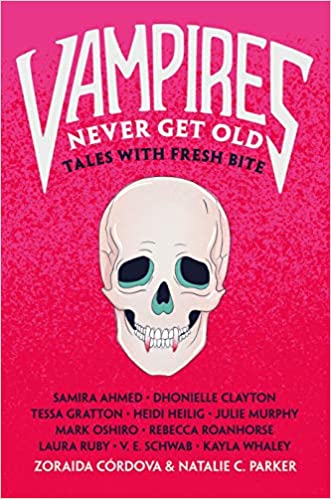 I’ve read a decent amount of vampire literature in my day, and I enjoy it. So I was looking forward to reading this collection of vampire stories. The editors really made an effort to incite a range of stories, with many diverse experiences represented. Some of the underrepresented characters include a girl who uses a wheelchair, a transgender boy, some gay kids, and several Black people.
I’ve read a decent amount of vampire literature in my day, and I enjoy it. So I was looking forward to reading this collection of vampire stories. The editors really made an effort to incite a range of stories, with many diverse experiences represented. Some of the underrepresented characters include a girl who uses a wheelchair, a transgender boy, some gay kids, and several Black people.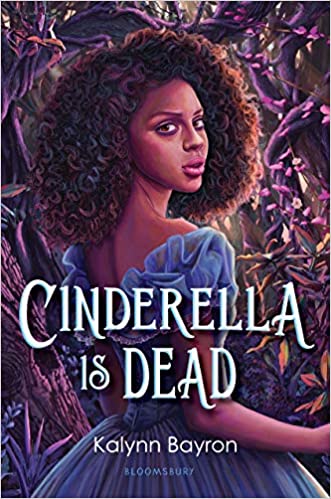 The premise of this novel is amazing. This is the magical kingdom where Cinderella found her Prince Charming, 200 years later—except everything is not all unicorns and rainbows. The current king has maintained the tradition of every sixteen-year-old girl going to the annual ball to get “selected” by the men from the kingdom. If they don’t get picked, they have to go back the next year and then the next, and if they don’t get selected by then, they’re “forfeit.” It isn’t clear to people what that means, exactly, but it’s not good. And the girls are supposed to go all out for the ball—actually, they’re supposed to be visited by the fairy godmother, if they’re "lucky" enough. But in reality, parents spend loads of money they don’t really have on dresses and everything so their daughters can be competitive at the ball. So that’s the basic setup—with a sexist medieval Western European-flavor. But there is a lot more going on than the characters know about.
The premise of this novel is amazing. This is the magical kingdom where Cinderella found her Prince Charming, 200 years later—except everything is not all unicorns and rainbows. The current king has maintained the tradition of every sixteen-year-old girl going to the annual ball to get “selected” by the men from the kingdom. If they don’t get picked, they have to go back the next year and then the next, and if they don’t get selected by then, they’re “forfeit.” It isn’t clear to people what that means, exactly, but it’s not good. And the girls are supposed to go all out for the ball—actually, they’re supposed to be visited by the fairy godmother, if they’re "lucky" enough. But in reality, parents spend loads of money they don’t really have on dresses and everything so their daughters can be competitive at the ball. So that’s the basic setup—with a sexist medieval Western European-flavor. But there is a lot more going on than the characters know about.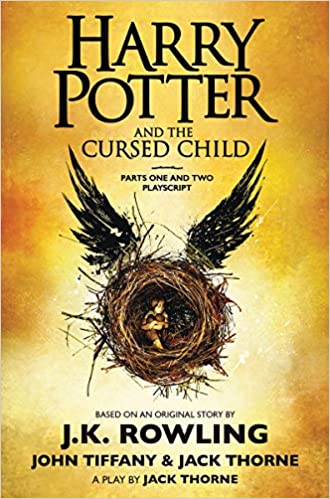 I've had this book a while and finally got around to picking it up. And I have to admit after reading it that I think it would work better as a produced play than a script (I was thinking that myself, but a friend of mine read the book and felt meh about it, but then saw the play and said it was awesome), but I still enjoyed the story.
I've had this book a while and finally got around to picking it up. And I have to admit after reading it that I think it would work better as a produced play than a script (I was thinking that myself, but a friend of mine read the book and felt meh about it, but then saw the play and said it was awesome), but I still enjoyed the story.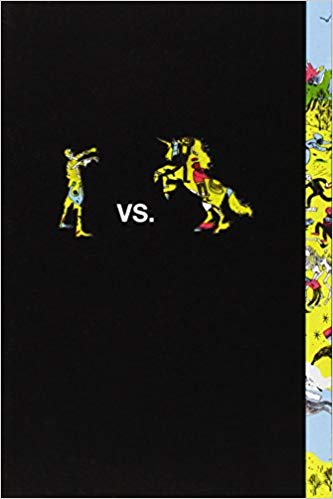 This is fun collection of mostly urban fantasy stories centering on (duh) zombies or unicorns. It is framed as a competition between the two editors, where Team Zombie is led by Justine and Team Unicorn by Holly. There are twelve stories in the collection but I was only able to read ten of them due to a weird printing error (pages from one story later in the book replaced pages in two other stories earlier in the book). Not sure how that happened with a major publisher like Simon & Schuster, but okay…
This is fun collection of mostly urban fantasy stories centering on (duh) zombies or unicorns. It is framed as a competition between the two editors, where Team Zombie is led by Justine and Team Unicorn by Holly. There are twelve stories in the collection but I was only able to read ten of them due to a weird printing error (pages from one story later in the book replaced pages in two other stories earlier in the book). Not sure how that happened with a major publisher like Simon & Schuster, but okay…
 This is really a remarkable and very powerful book. First off, it’s a very engaging and exciting story with some action. You’ve got the Civil War setting and you’ve got zombies. I’m pretty sure that Civil War era isn’t a common setting in YA historical fiction, so that’s a nice thing right there. But Ireland has really twisted that setting with her introduction of zombies, or shamblers as they call them in the book (which is, by the way, an awesome term).
This is really a remarkable and very powerful book. First off, it’s a very engaging and exciting story with some action. You’ve got the Civil War setting and you’ve got zombies. I’m pretty sure that Civil War era isn’t a common setting in YA historical fiction, so that’s a nice thing right there. But Ireland has really twisted that setting with her introduction of zombies, or shamblers as they call them in the book (which is, by the way, an awesome term).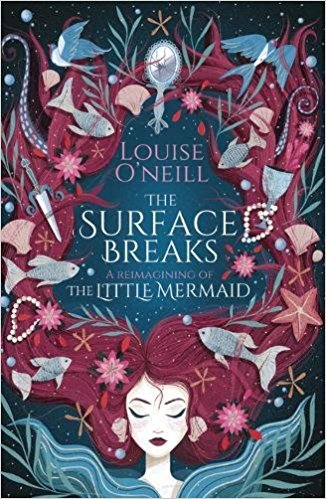 I had high expectations for The Surface Breaks because I think O’Neill is an amazing and very skilled writer. She did not let me down. This book is different from her others, as it’s a reimagining of the fairy tale The Little Mermaid.
I had high expectations for The Surface Breaks because I think O’Neill is an amazing and very skilled writer. She did not let me down. This book is different from her others, as it’s a reimagining of the fairy tale The Little Mermaid.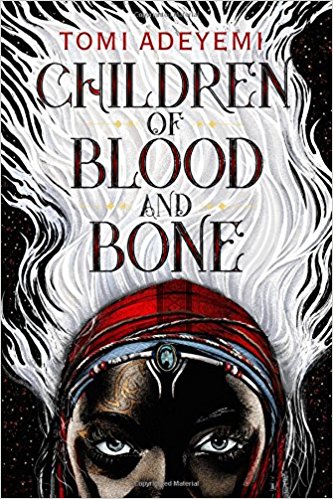 There’s a lot of hype surrounding this book (for instance, I saw Entertainment Weekly called Adeyemi the next J. K. Rowling). Hype can be both good and bad. It had a lot to live up to, but I was still excited to read it, even though it’s way longer than my normal reads.
There’s a lot of hype surrounding this book (for instance, I saw Entertainment Weekly called Adeyemi the next J. K. Rowling). Hype can be both good and bad. It had a lot to live up to, but I was still excited to read it, even though it’s way longer than my normal reads.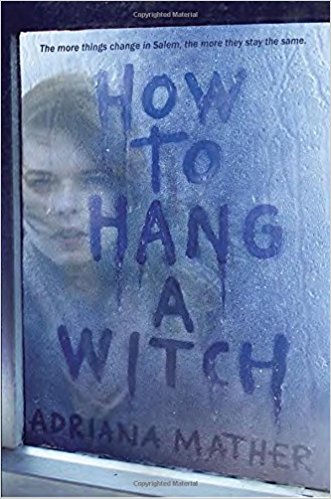 I joined one of those new monthly book clubs where they send you a book you aren’t specifically expecting, and this was the first one they sent me. I hadn’t heard of it, although I was at Barnes and Noble the other day and they had about 5 outward-facing copies on display, so I’m guessing it’s gaining in popularity. It’s certainly got good reviews on Amazon (4.8 stars, which you rarely see).
I joined one of those new monthly book clubs where they send you a book you aren’t specifically expecting, and this was the first one they sent me. I hadn’t heard of it, although I was at Barnes and Noble the other day and they had about 5 outward-facing copies on display, so I’m guessing it’s gaining in popularity. It’s certainly got good reviews on Amazon (4.8 stars, which you rarely see).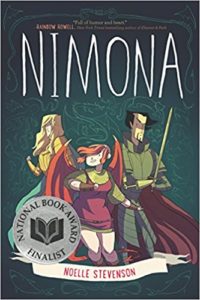 I don’t remember how I found out about this graphic novel, but I’m glad I did, because it was highly entertaining. Although art is generally a matter of personal preference, I liked it. The book features Nimona, a shapeshifter whose base form is that of a teenage girl, and Ballister Blackheart, the kingdom’s purported notorious villain. Blackheart has a vendetta against Ambrosius Goldenloin, who destroyed Blackheart’s right arm. These are the folks you see on the cover. The comic is set in a vaguely medieval world with advanced science. It’s clever and even subversive at times, all while managing to be hilarious.
I don’t remember how I found out about this graphic novel, but I’m glad I did, because it was highly entertaining. Although art is generally a matter of personal preference, I liked it. The book features Nimona, a shapeshifter whose base form is that of a teenage girl, and Ballister Blackheart, the kingdom’s purported notorious villain. Blackheart has a vendetta against Ambrosius Goldenloin, who destroyed Blackheart’s right arm. These are the folks you see on the cover. The comic is set in a vaguely medieval world with advanced science. It’s clever and even subversive at times, all while managing to be hilarious.